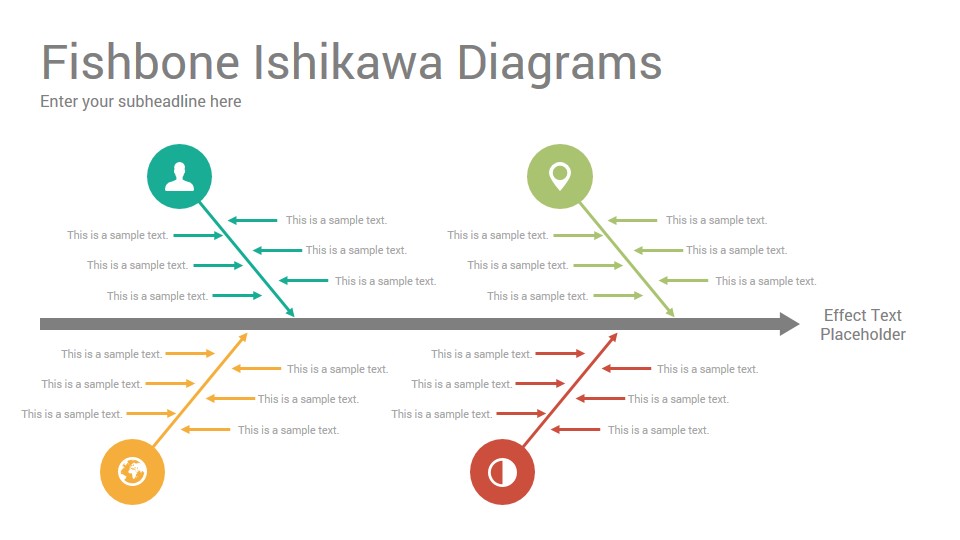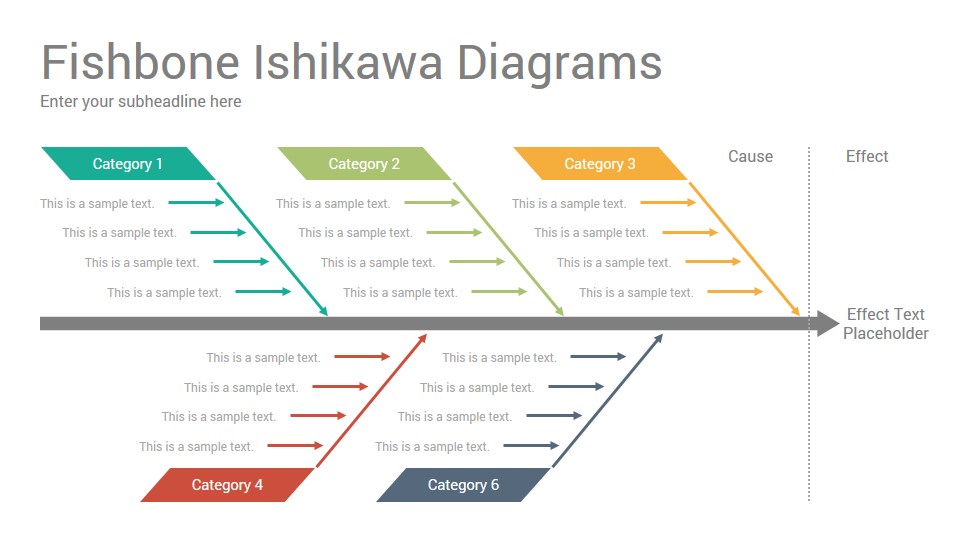

The team used the six generic headings to prompt ideas. įishbone Diagram Example 1 This fishbone diagram was drawn by a manufacturing team to try to understand the source of periodic iron contamination. Moreover, positive and negative aspects of the situation are not being distinguished. It can however become messy for complicated situations. Tips / Comments It can show much of a situation's structure. If the top priority spine has no branches, use this aspect of the situation for the next step in problem solving. Continue this process with the other main spines. Select the most important main spine then rank the items drawn off that spine. Aspects related to a particular main spine are then drawn off that spine. For the main aspects, draw lines off the central spine. Collect information from the participants on aspects of the situation.
#Ishikawa diagram ppt how to#
How to Use Cause-and-Effect Analysis Steps Draw a horizontal line (central spine) near the centre of a page. It does not tell which is the root cause, but rather possible causes.

Why Fishbone : The fishbone analysis is mostly used by teams at the deepen stage of the remodeling process. When should a fishbone diagram be used? Need to study a problem/issue to determine the root cause? Want to study all the possible reasons why a process is beginning to have difficulties, problems, or breakdowns? Need to identify areas for data collection? Want to study why a process is not performing properly or producing the desired results?

What is Fishbone/Cause-and-Effect / Ishikawa Analysis ? A cause-and-effect analysis generates and sorts hypotheses about possible causes of problems within a process by asking participants to list all of the possible causes and effects for the identified problem Cause-and-effect diagrams can reflect either causes that block the way to the desired state or helpful factors needed to reach the desired state. It is also called as cause-and-effect analysis. Therefore, it is often referred to as the fishbone diagram. The design of the diagram looks much like the skeleton of a fish. Therefore, it may be referred to as the Ishikawa diagram. Kaoru Ishikawa, a Japanese quality control statistician, invented the fishbone diagram. Content What is fishbone? What is fishbone analysis? Usage Why ? How to use? Tips Examples Types of root-cause analysis?įishbone Dr.


 0 kommentar(er)
0 kommentar(er)
